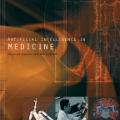Increasing usage of Digital Manufacturing (DM) in safety-critical domains is increasing attention on the cybersecurity of the manufacturing process, as malicious third parties might aim to introduce defects in digital designs. In general, the DM process involves creating a digital object (as CAD files) before using a slicer program to convert the models into printing instructions (e.g. g-code) suitable for the target printer. As the g-code is an intermediate machine format, malicious edits may be difficult to detect, especially when the golden (original) models are not available to the manufacturer. In this work we aim to quantify this hypothesis through a red-team/blue-team case study, whereby the red-team aims to introduce subtle defects that would impact the properties (strengths) of the 3D printed parts, and the blue-team aims to detect these modifications in the absence of the golden models. The case study had two sets of models, the first with 180 designs (with 2 compromised using 2 methods) and the second with 4320 designs (with 60 compromised using 6 methods). Using statistical modelling and machine learning (ML), the blue-team was able to detect all the compromises in the first set of data, and 50 of the compromises in the second.
翻译:在安全关键领域越来越多地使用数字制造(DM)正在日益引起人们对制造过程网络安全的注意,因为恶意第三方可能会试图在数字设计中引入缺陷;一般而言,DM过程涉及在使用切片程序将模型转换成适合目标打印机的打印指令(例如g-code)之前先创建数字对象(作为CAD文件),然后使用切片程序将模型转换成适合目标打印机的打印指令(例如g-code)。由于g-code是一种中间机器格式,恶意编辑可能难以检测,特别是在制造商无法获得黄金(原始)模型的情况下。在这项工作中,我们的目标是通过红色(红色)/蓝色(蓝色)-team)案例研究量化这一假设,即红色(作为CAD文件)旨在产生微妙的缺陷,从而影响3D印刷部件的特性(强度),而蓝色-team的目的是在没有黄金模型的情况下检测这些修改。案例研究有两套模型,第一套是180个设计(2个方法使2个设计受损),第二套是4320设计(6个方法使60个设计受损)。利用统计建模和机器学习(ML),蓝-Te-Te-Team 能够检测50套数据的折中的所有折合。




